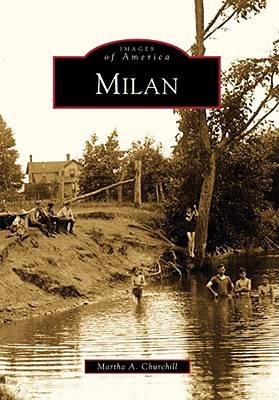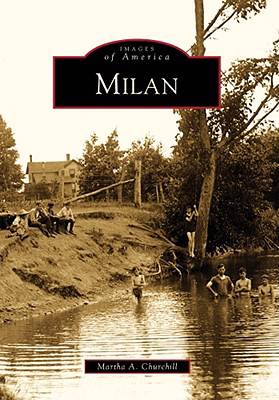
- Afhalen na 1 uur in een winkel met voorraad
- Gratis thuislevering in België vanaf € 30
- Ruim aanbod met 7 miljoen producten
- Afhalen na 1 uur in een winkel met voorraad
- Gratis thuislevering in België vanaf € 30
- Ruim aanbod met 7 miljoen producten
Zoeken
Omschrijving
John Marvin started the town of Milan in 1831 by placing a two-story log building beside a dirt Native American trail. The Saline River was just a few steps away. About that time, Native Americans were either moving to reservations west of Michigan or blending in with the melting pot. Milan and its neighboring communities, such as Azalia, Paint Creek, and Mooreville, grew quickly with the influx of settlers from out East. Shoemakers arrived, along with grocers, flour mills, and even cheese factories. The Milan Area Historical Society holds a treasure trove of photographs, maps, and drawings showing the heritage in and around Milan. One of its citizens was nationally known for his scale inventions. Other citizens achieved notoriety for pulling off a stock scam in New York promoting the Electric Sugar Refining Company. Two magnificent homes near Milan were built with sugar money.
Specificaties
Betrokkenen
- Auteur(s):
- Uitgeverij:
Inhoud
- Aantal bladzijden:
- 128
- Taal:
- Engels
- Reeks:
Eigenschappen
- Productcode (EAN):
- 9780738577012
- Verschijningsdatum:
- 15/02/2010
- Uitvoering:
- Paperback
- Formaat:
- Trade paperback (VS)
- Afmetingen:
- 168 mm x 235 mm
- Gewicht:
- 303 g

Alleen bij Standaard Boekhandel
+ 67 punten op je klantenkaart van Standaard Boekhandel
Beoordelingen
We publiceren alleen reviews die voldoen aan de voorwaarden voor reviews. Bekijk onze voorwaarden voor reviews.











